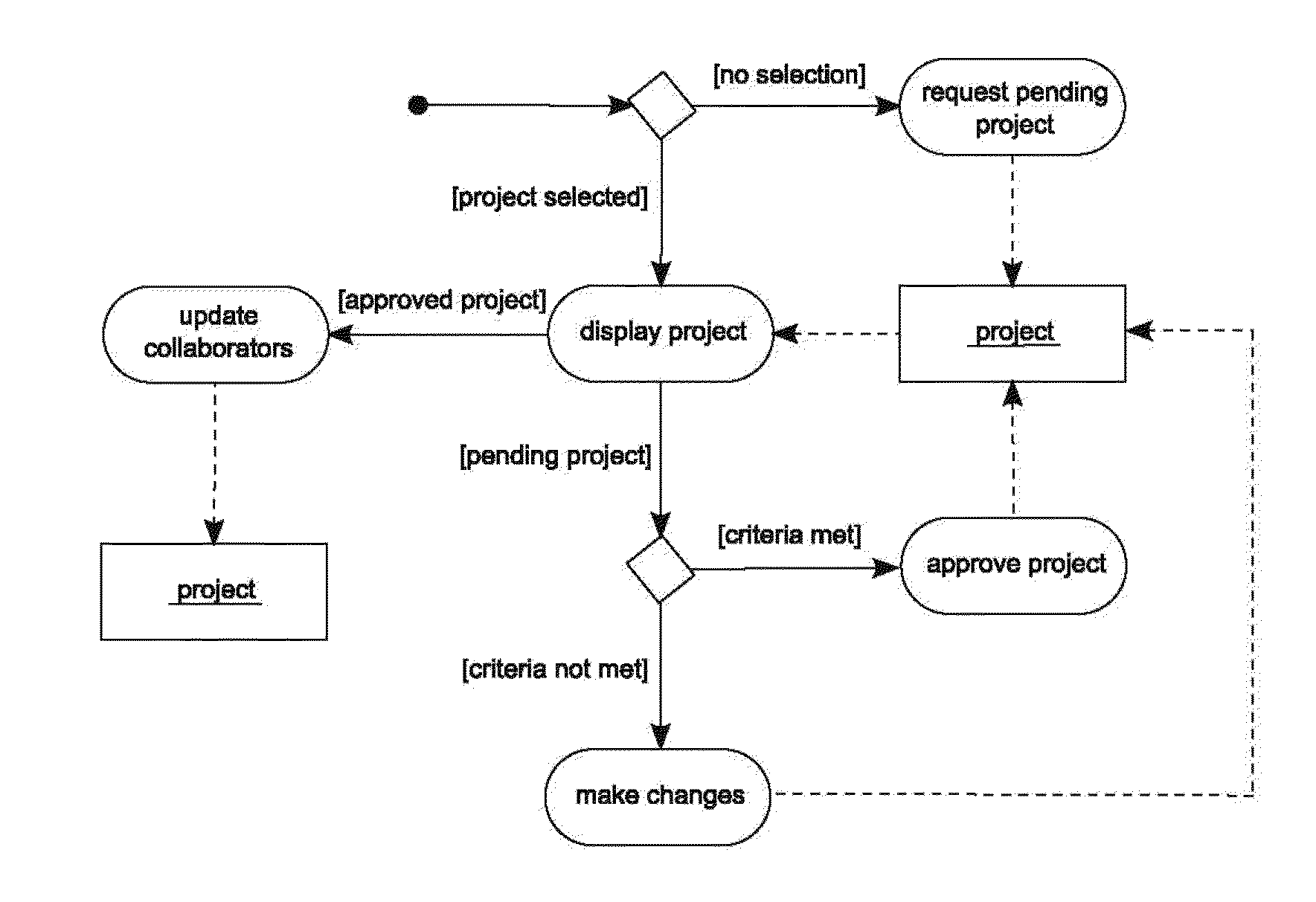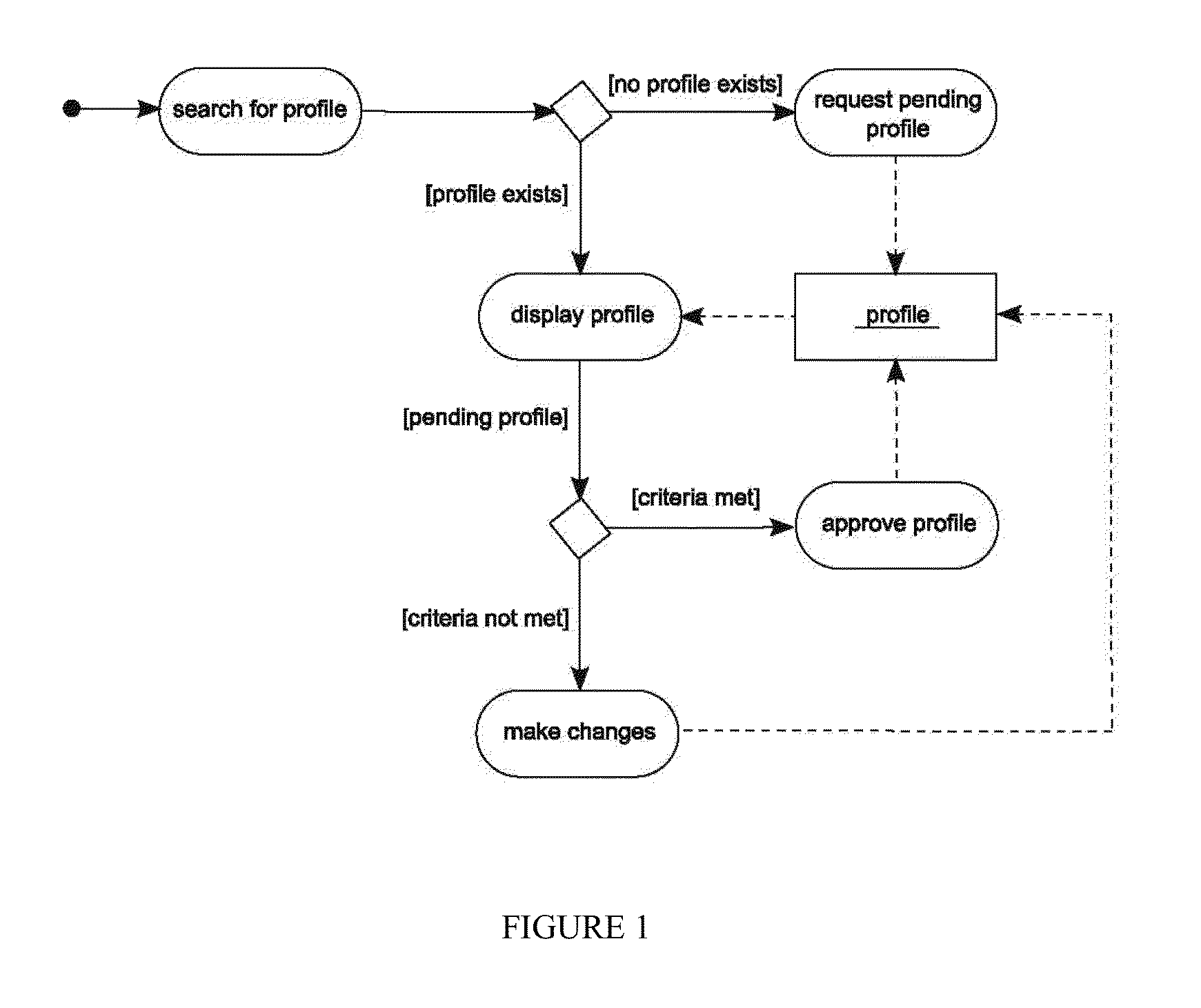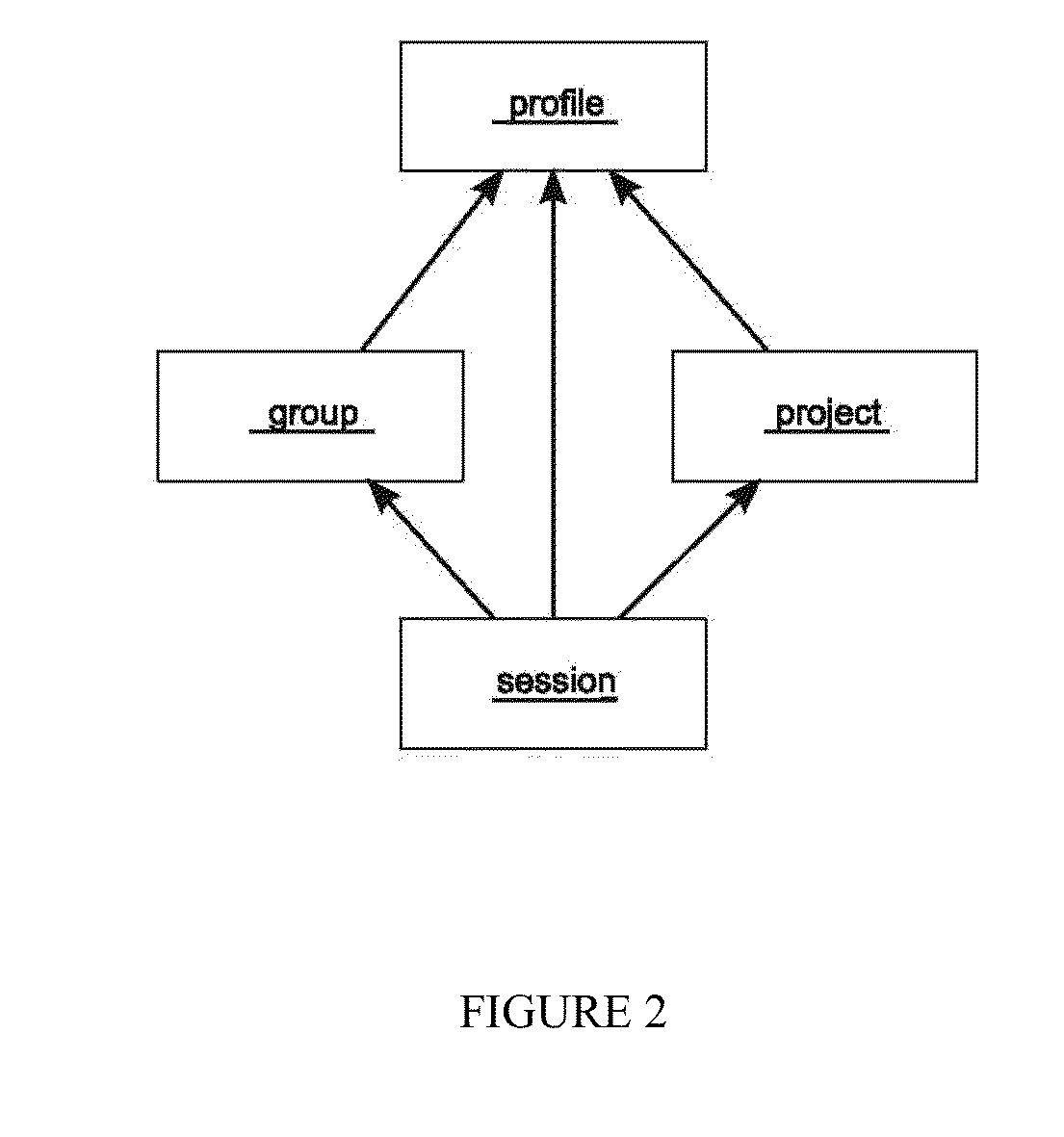Multi-modality, multi-resource, information integration environment
a multi-resource, information integration environment technology, applied in the field of multi-resource, information integration environment, can solve the problems of lack of support, inability to comprehensively address these challenges, and difficulty in accessing data and finding information about related prior studies
- Summary
- Abstract
- Description
- Claims
- Application Information
AI Technical Summary
Benefits of technology
Problems solved by technology
Method used
Image
Examples
example 1
[0144]Below is an example of MIMI's usage analysis followed by a cost-benefit analysis. The usage analysis gives a profile of MIMI's usage statistics over an 18-month period with respect to the number of users, imaging sessions, and scientific data uploads / downloads. The cost-benefit analysis demonstrates MIMI's benefits in comparison to a status quo.
[0145]Using MIMI's usage-statistics compilation capability, a usage analysis of MIMI at the Case Center for Imaging Research (CCIR) was performed. Since its initial deployment, MIMI has served approximately 150 principal investigators, collaborating investigators, and research assistants. During this period, a total of approximately 1,600 distinct sessions have been scheduled through MIMI, spanning an 18-month period or 400 working days. This translates to four scheduled sessions per working day. Among all sessions, half are linked to scientific data. This entails that imaging data have been transferred to the Data Server ...
example 2
[0159]A preliminary evaluation was performed on the efficiency of VISAGE for query construction. Three common queries with increasing levels of logical complexity on patient demographics were selected. Two expert users created the queries in both VISAGE and the i2b2 web client, respectively. The number of clicks and time needed for creating the queries were recorded and tabulated in the next table.
[0160]As can be seen from FIG. 9, VISAGE reduced time and effort (in terms of the number of clicks) to a half or nearly a third. However, this evaluation is preliminary and only looks one specific aspect of the query interface.
example 3
[0161]An example of a simple relationship using the convention may look as follows:
[0162]# Database Table (Column) Structures
[0163]books.id
[0164]chapters.id
[0165]chapters.book_id
[0166]# Model Definition
[0167]class Chapter
[0168]belongs_to :book
[0169]end
[0170]class Book
[0171]has_many :chapters
[0172]end
[0173]A programmer not using this convention, and instead using the following table structures, would need to specify the foreign key explicitly.
[0174]# Database Table (Column) Structures
[0175]books.id
[0176]chapters.id
[0177]chapters.BOOKID
[0178]# Model Definition
[0179]class Chapter
[0180]belongs_to :book, :foreign_key=>‘BOOKID’
[0181]end
[0182]class Book
[0183]has_many :chapters
[0184]end
PUM
 Login to View More
Login to View More Abstract
Description
Claims
Application Information
 Login to View More
Login to View More - R&D
- Intellectual Property
- Life Sciences
- Materials
- Tech Scout
- Unparalleled Data Quality
- Higher Quality Content
- 60% Fewer Hallucinations
Browse by: Latest US Patents, China's latest patents, Technical Efficacy Thesaurus, Application Domain, Technology Topic, Popular Technical Reports.
© 2025 PatSnap. All rights reserved.Legal|Privacy policy|Modern Slavery Act Transparency Statement|Sitemap|About US| Contact US: help@patsnap.com



